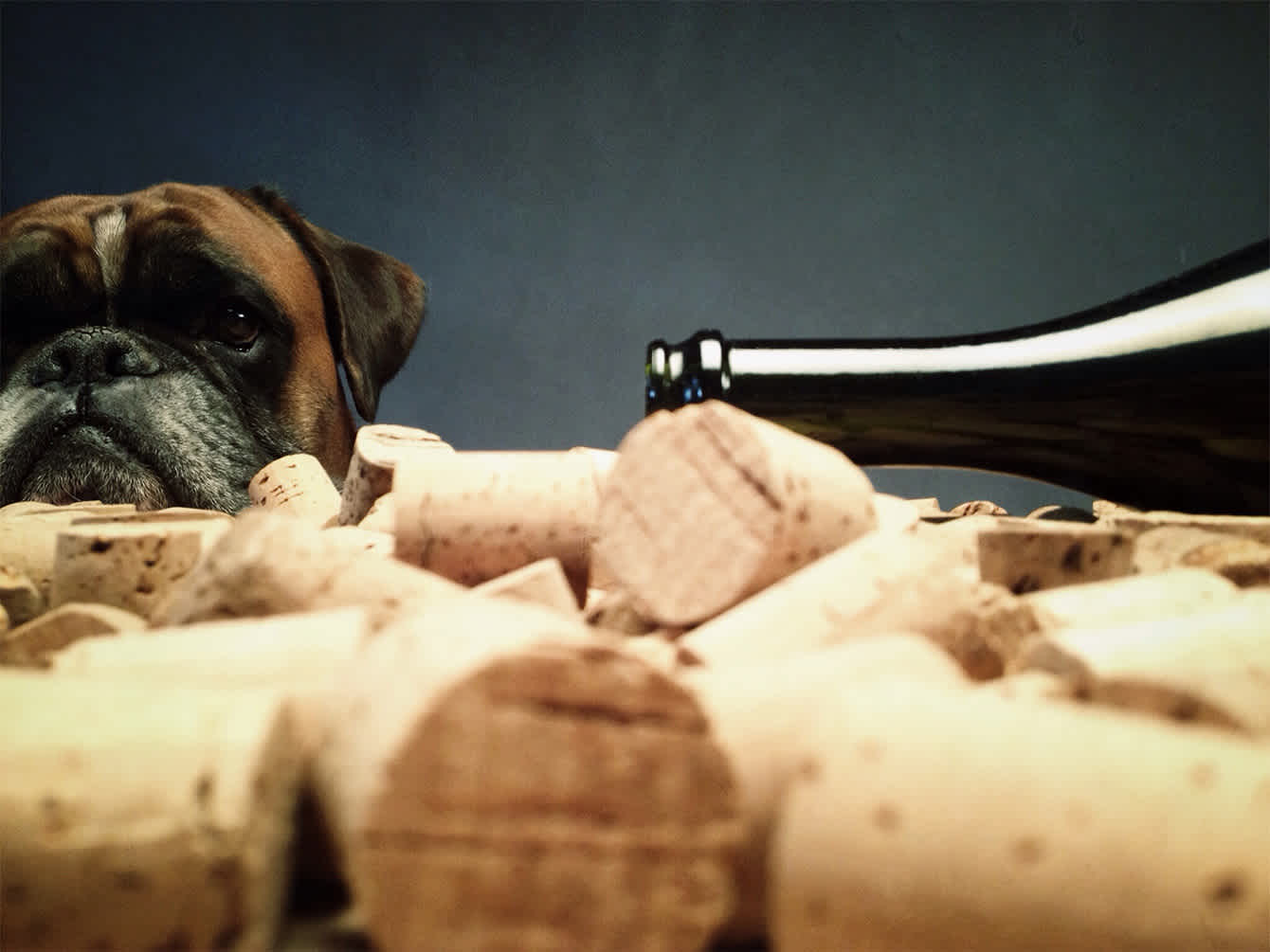What is Corked Wine?
Learn about corked wine, how it happens, and how to detect it.
Imagine you go out to dinner and a nice wine is being served. When your sommelier hands you the glass to taste, something doesn't seem right. You expected different notes from this Napa Cab, but it smells like a wet dog rolled around in your glass. What's going on?
Wine can have certain faults, and the most dreaded, but easily identifiable is cork taint, also known as TCA (Trichloroanisole). This is a smell that you won't quickly forget when you encounter it. Does your wine smell like a musty basement or wet cardboard? If so, your wine might be corked.
Over the past few decades winemaking technology has advanced by leaps and bounds, and the incidence of TCA being in corks has fallen drastically. Veteran wine drinkers speak about how one in every few bottles was bad a few decades ago, but today it is estimated that less than 5% of wines are affected with conflicting accounts reporting anywhere from under 1%-7%.

Take Our Quiz Today
Get award-winning delicious wines from all over the world shipped straight to your door. Take the quiz to get the perfect pairings for your holiday season.
Take The Quiz TodayIN THIS ARTICLE:
Want personalized wines?
Get your first box of wines for $44.95 + free shipping.

What is Cork Taint?
Cork taint is a major wine fault caused by non-natural fungi that are formed when cork is treated with chlorine to clean and lighten the color. That being said, it has also been found to come from other parts of the winemaking process like barrels, storage rooms, and wineries, not just cork stoppers.
Cork taint or Trichloroanisole (scientifically 2,4,6-trichloroanisole) is a chemical compound that can be detected in minuscule amounts by wine drinkers at almost any level. The tainted wine displays specific moldy notes but is otherwise harmless. The problem will get worse the longer an affected wine is open and exposed to oxygen, and especially if it is poured into a decanter.
How To Tell If Your Wine Is Corked
If you have a bottle of wine that was made in the past few years with a natural cork, there is a very small possibility that it is corked, however it does happen from time to time.
Open the wine, if you see crystals on the bottom of your cork (white crystals in white wine, red crystals in red wine) don't worry. That's just tartrates and not a corked bottle of wine. But if your wine smells like old newspaper, wet dog, or moldy cardboard then it is probably corked.
If you are curious about the smell, some local wine shops will reimburse customers for corked bottles, and they sometimes keep them on hand. Give them a call and see if you can give it a taste. TCA will not harm you but can ruin the experience of drinking wine.
Fun Fact
If your wine has pieces of cork floating it, it is not corked
Where Does Cork Come From?
Cork is the bark of the cork tree (Quercus suber), a species of oak that largely grows around the Mediterranean Sea and in particular on the Iberian Peninsula. The industry boomed alongside the developments in glass technology as glassblowers learned how to make stronger bottles in the 1700s and new closures were needed. Cork has dominated for the past few centuries as the closure of choice for wine.
Fun Fact
Half of the cork in the world comes from Portugal!
In the 1980s there was a ripple effect through the cork industry as the incidence of TCA appeared to be on the rise and led to many producers adopting alternative closures, however, many staunch traditionalists and romantics demanded that cork remain the primary closure for wine.
The Wine industry pressure insisted on better drying, seasoning, and anti-microbial cleaning processes be updated to address the presence of TCA.
As TCA is an airborne fungi, it can exist elsewhere along the supply chain, but thankfully spoilage is down across the board and is continuing to shrink as alternative packaging and closures are more widely adopted. Cork still makes up more than half of all wine closures.
Winemakers and Cork Selection
Not all cork is equal in the eyes of winemakers. The best winemakers are incredibly discerning in their selection of cork for their best wines. Cork is rigorously inspected before being inserted into their best bottles of wine. Some wine producers even favor cork from specific regions.
Not every wine needs to be closed with closures that specific, and there are many very good synthetic and hybrid corks on the market today. Most winemakers have chosen to use blended (also called agglomerated) corks and scientists around the world are testing the long term effects of these synthetic corks. While they do cut the rate of TCA, they are susceptible to their own issues.
Fun Fact
Due to the size of Champagne corks, they are generally multiple pieces of cork joined together.
Aging Wine and Corks
Storing a bottle of wine for an extended period of time comes with all types of risks that could affect the wine's taste when you open it. No one wants to cellar a wine for over a decade and open up a bad bottle at a wine tasting.
Most wine is meant to be consumed within the first year or two of bottling. This means that any of the closures (natural or synthetic) will work perfectly well for your wine. Don't like using a corkscrew? Choose a bottle with a screw top.
IN THIS ARTICLE
Want personalized wines?
Get your first box of wines for $44.95 + free shipping.


WinePrint™ by Firstleaf
Are you looking to learn more about your wine preferences? Check out our Wine Print for an in-depth look at your personal tasting profile. Discover your favorite wines, varietals, regions, and tasting notes and get personalized recommendations wherever you are.
Learn More